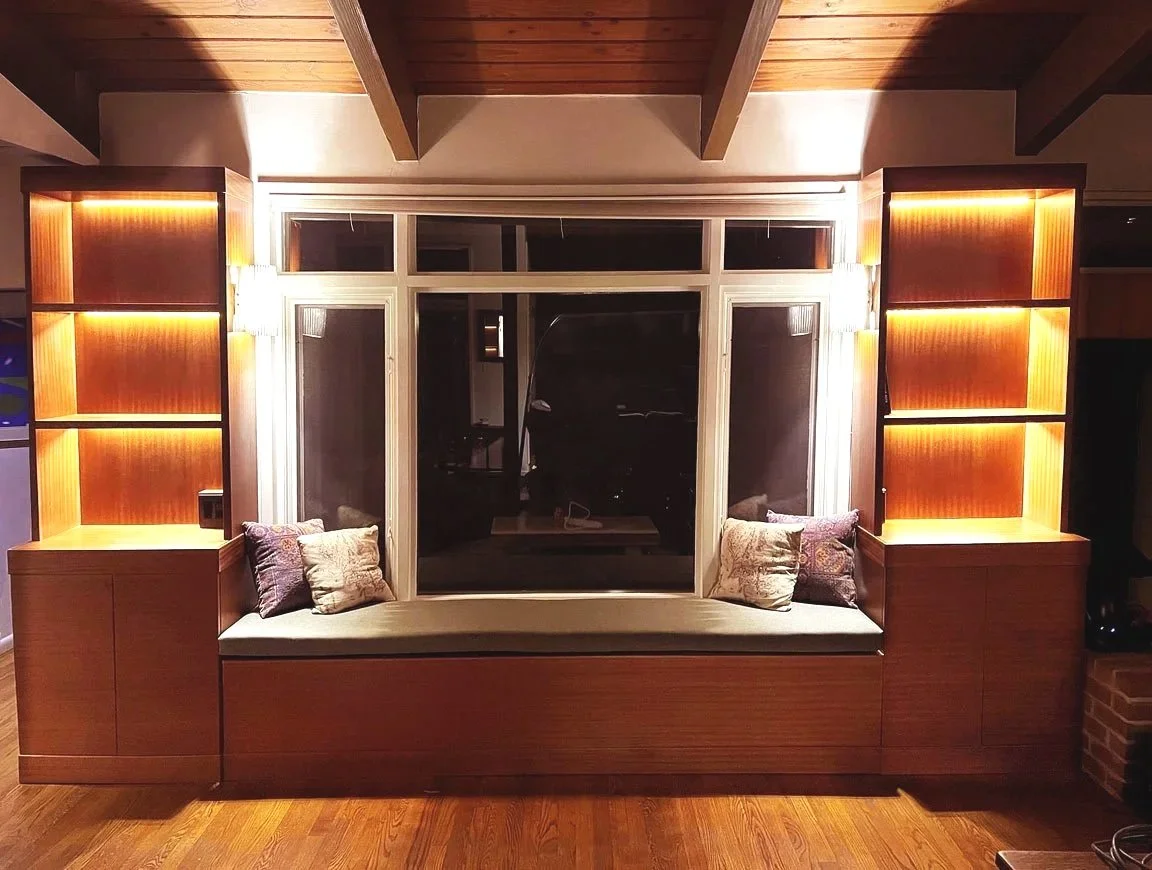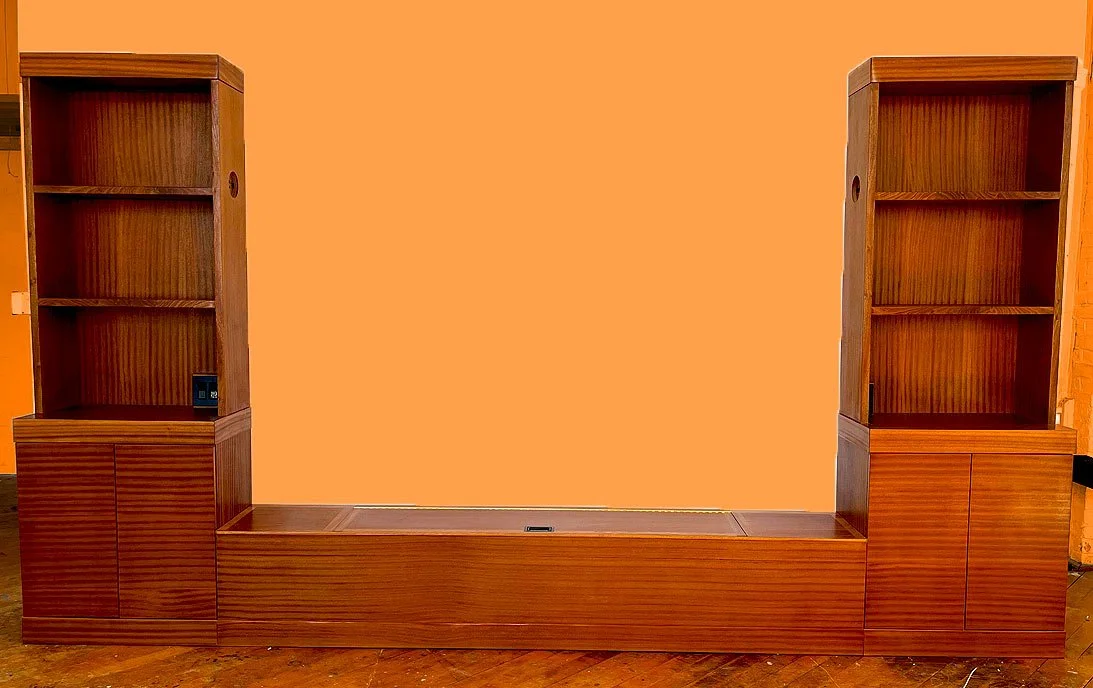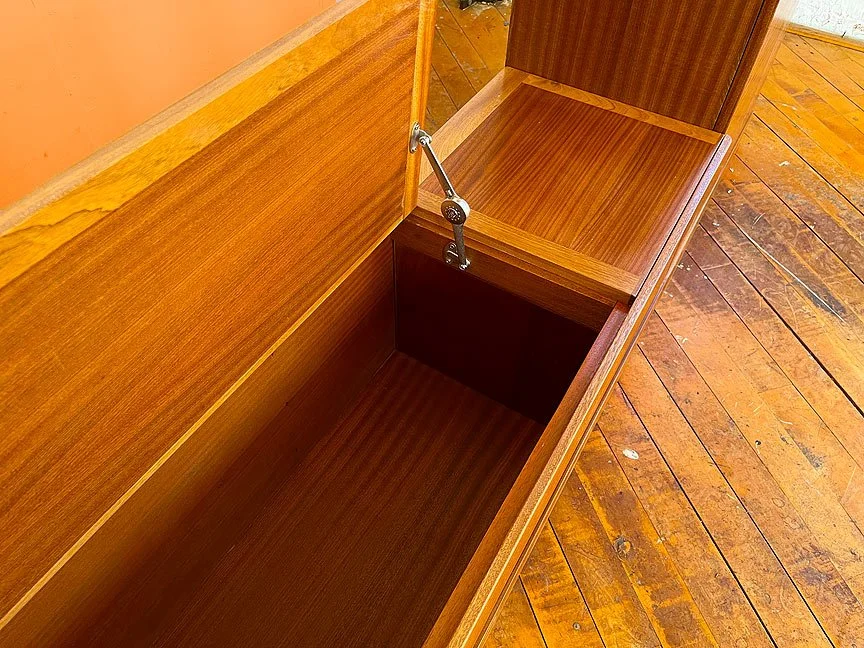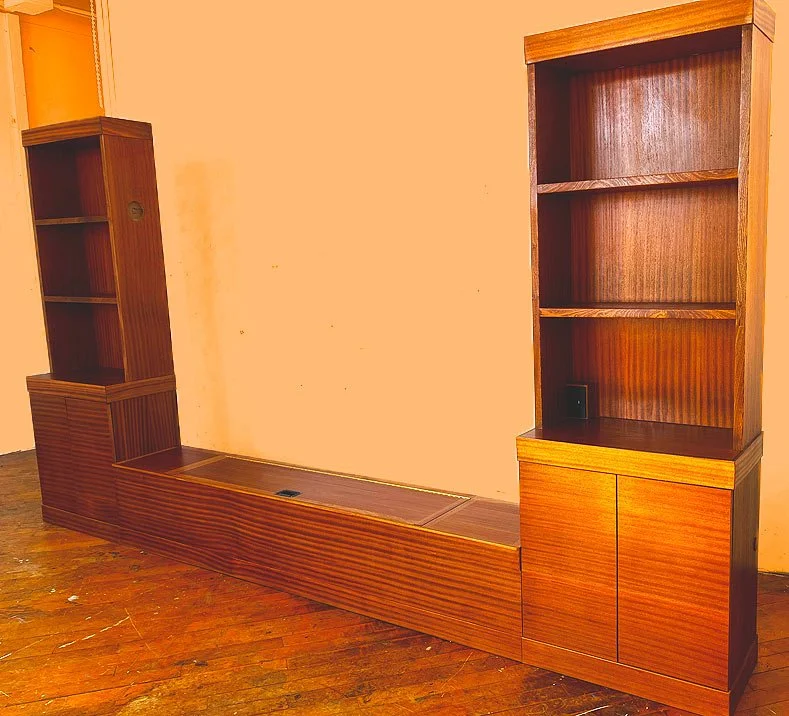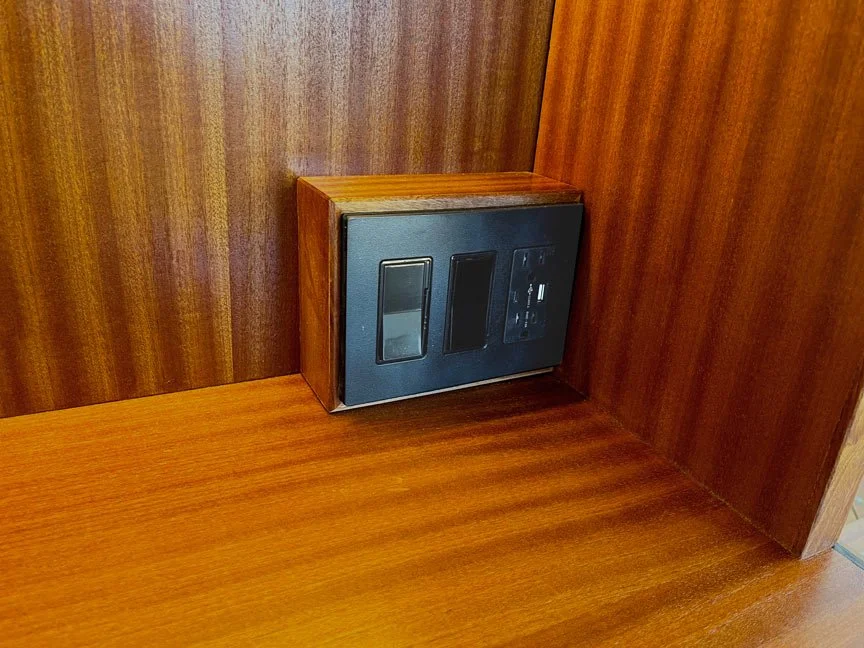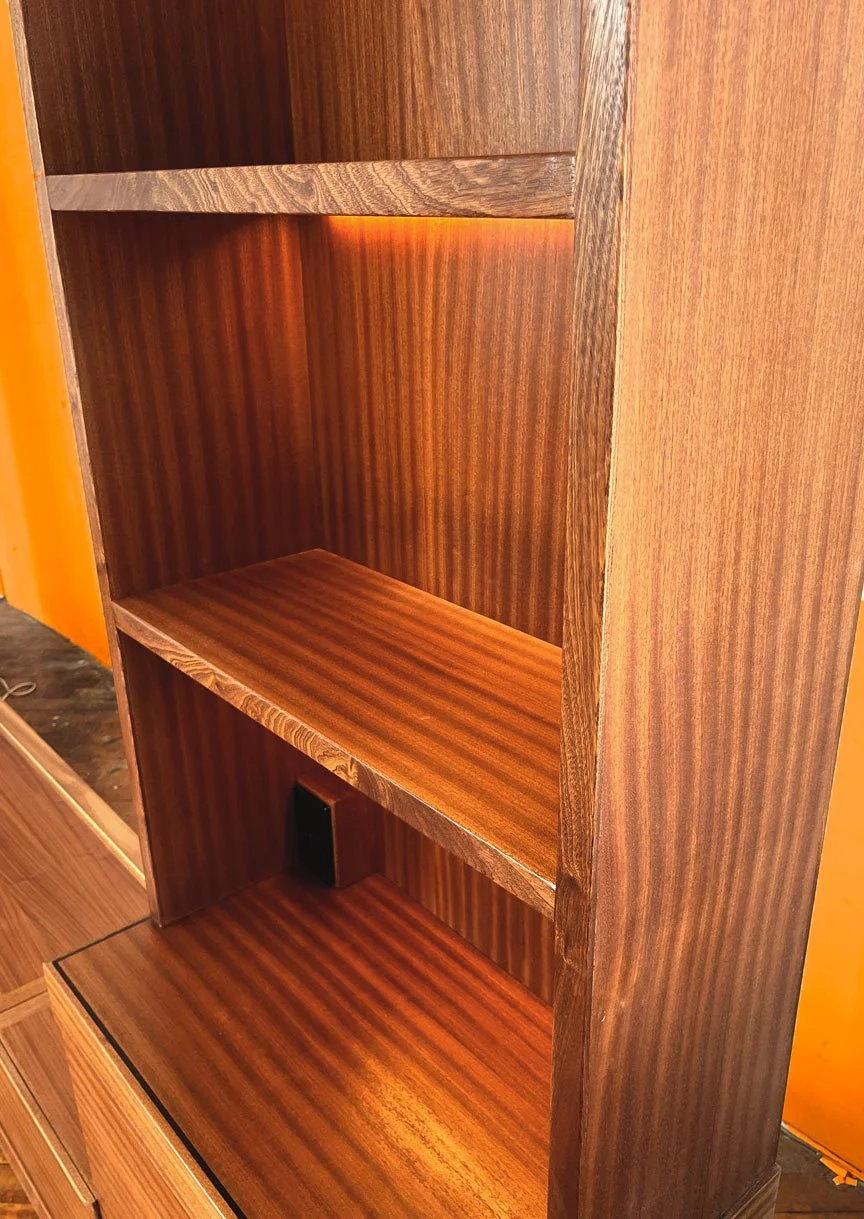Wohl Wall Unit
This Wall Unit is handcrafted from elegant Ribbon Stripe Sapele, chosen for its rich character and natural beauty. The client envisioned a clean, minimalist design with straight lines and the use of a single wood species—an approach that introduced me to the Japandi style (explained further below). The finished piece balances timeless craftsmanship with modern convenience, featuring two built-in power units with USB ports and a dimmer switch to control the sconces.
This wall unit, like all of Joel’s pieces, is custom-made, giving you the freedom to personalize every detail, including size, layout, and wood selection.
Visit the “Customize It“ page to learn more about the process."
Japandi Style Furniture
Japandi style furniture is a design approach that blends Japanese minimalism with Scandinavian functionality and coziness (often called hygge). It’s a fusion of two aesthetics that share similar values—simplicity, craftsmanship, and a focus on natural materials—while balancing them in complementary ways.
Here are the key elements of Japandi style furniture:
Minimalist design: Clean lines, uncluttered spaces, and a “less is more” philosophy.
Natural materials: Wood (especially lighter Scandinavian tones like ash, pine, or birch, mixed with darker Japanese woods like walnut or oak), bamboo, linen, wool, rattan, stone, and ceramics.
Neutral, calming colors: Muted palettes with earthy tones—soft whites, beige, taupe, gray, warm browns, and occasional dark accents.
Functionality: Multi-purpose and practical furniture pieces, often low to the ground in the Japanese tradition.
Craftsmanship and authenticity: Handmade, durable pieces with visible joinery or natural textures are favored over mass-produced furniture.
Balance of contrasts: Scandinavian design brings warmth and coziness, while Japanese design emphasizes restraint and elegance. Together they create a space that is both welcoming and serene.
Common Japandi furniture examples include:
Low-profile wooden platform beds.
Simple dining tables with straight, slim legs.
Minimalist sofas with natural fabric upholstery.
Open shelving with carefully chosen decorative items.
Woven or paper lantern-inspired lighting.

